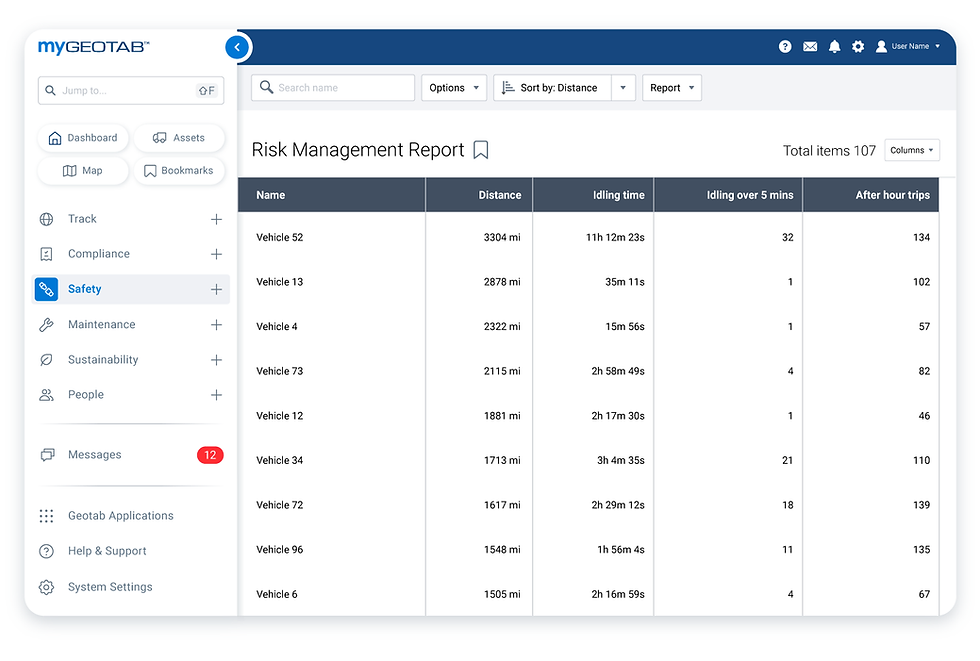3G Sunset: A Guide to Upgrading Fleet Technology
- Mark Bowden
- Feb 11, 2021
- 3 min read
It is no secret that technology has advanced by leaps and bounds over the past 10 years.
In 2011, most people were still coming to grips with smartphones, especially in the trucking industry. Although trucking has been on the tail-end of the technology revolution, it has been in hyper-growth over the course of the past four years. Much of which being initially fueled by the ELD mandate that went into enforcement at the end of 2017.

With newer technology coming onto the market in droves, our industry saw a boom in the systems, interconnectivity, and unlimited options to help streamline fleet management.
At that point in time, fleets were faced with a decision. Adopt more traditional telematics, that is hardwired into the truck, or look in the direction of mobile technology that was easier to install. The latter also came with a lower price point, resulting in widespread adoption.
Today, fleets are on the doorstep of the next evolution of transitions within the industry as major cellular providers will be systematically shutting down their 3G networks in the near future.
How Does 3G Sunset Effect Trucking?
In short, there is a good chance that some, if not all, of your fleet’s electronic logging devices, are powered by 2G/3G.
During the telematics expansion, providers opted to build their devices to run off of 2G and 3G networks. At the time, they provided the speed that was needed to share information, while keeping costs down for their customers.

As providers make the switch to exclusively running their networks off of 4G(with 5G in the future), it will become necessary to upgrade equipment to keep operations running smoothly and stay in compliance.
“ELD providers that have embedded 2G/3G networks in their equipment will be forced to replace existing equipment their customers are using, and that adds expense and the potential of downtime to any fleet,” says J.J. Keller’s Paul Schwartz.
Things to Consider When Upgrading Fleet Technology
Factors that are fleet-specific should be considered, but with the knowledge that a hard stop is inevitable, consider these three things before making any decisions.
Timing
As you start doing research you will quickly find that the dates in which these older networks will be phased out vary based on provider. Potentially providing some breathing room if sticking with your current provider.

Additionally, even with each provider target dates have been regularly moved. At the beginning of the year, Verizon announced that they would be delaying their 3G shutdown, despite an initial goal of having it transitioned by the end of 2020.
Whether sticking with your current provider or exploring other options, your rep should be able to provide you specifics on sunset dates.
Data
Data has become king and with the added speed, you are able to get real-time information to make the best decisions possible for your fleet.
But the data that your telematics system has provided over the past few years is incredibly valuable and should not be discarded.
“While hardware can be retired, the data from telematics systems should be accessible in an archive or live cloud-based solutions,” says Colin Sutherland, Executive Vice President of Sales and Marketing at Geotab. “Before you upgrade and possibly switch telematics providers, it is important to ensure you have all of your data archived for your use.”

How your system absorbs and crunches that data is also incredibly important. As the interconnectivity of fleet management systems grows, look into technology that your fleet may be underutilizing or has not implemented.
Transition Time
As you do your research, dive into the operations side of the equation to get an accurate estimate of the installation time. For providers like Geotab, it is a straightforward plug and play option but there may be software updates that require additional time before the unit is fully operational.
Fleet size or terminal location may also need to be considered, as logistically there will need to be additional time given and/or training needed to install new devices.

Equipment availability should also be considered, especially as sunset dates draw near and the mad dash for upgrading technology inevitably happens.
What about 5G?
Although a frequently asked question, almost all fleet management systems will be transitioning their equipment to 4G. Currently, moving exclusively to 5G is cost-prohibitive and 4G provides ample speed and reliability for today’s technology.
With preliminary sunsetting of 4G networks currently sitting around 2030 fleets will have security in knowing that any upgrades to technology now will not need replacing for the foreseeable future.
Upgrading Your Fleet’s Technology
Researching, implementing, and adopting new fleet management technology takes time but will be essential for a smooth transition away from 2G/3G networks. Argos Connected Solutions is an official Geotab reseller located in Indianapolis, servicing the midwest with the latest fleet management technology on the market. Whether you are upgrading your telematics, looking for dashcams, or addressing inefficiencies within your fleet, we are here to help. Connect today and learn more.

.png)



Comments